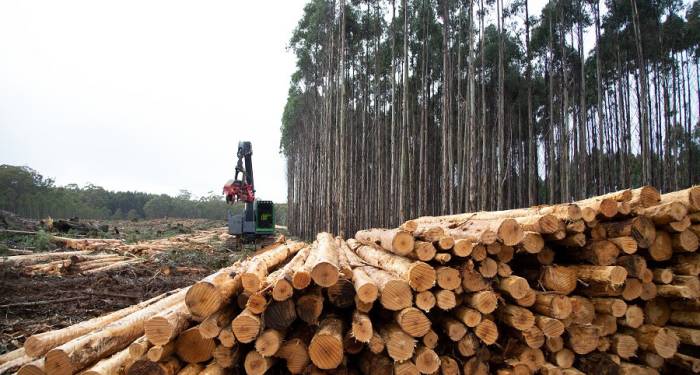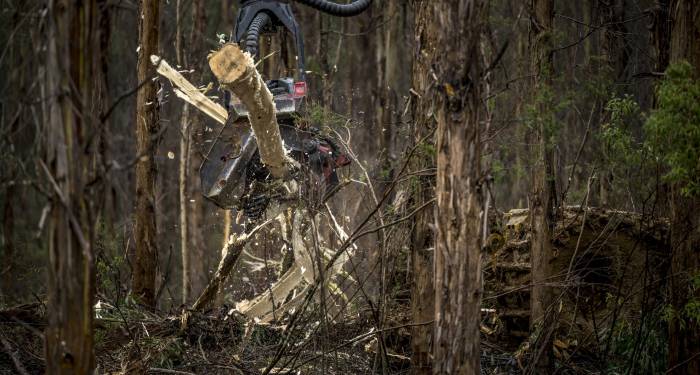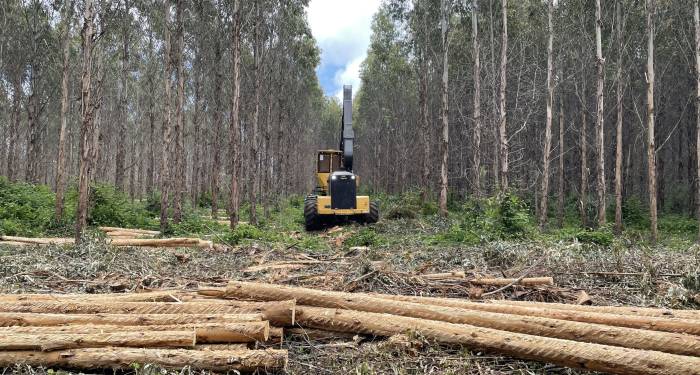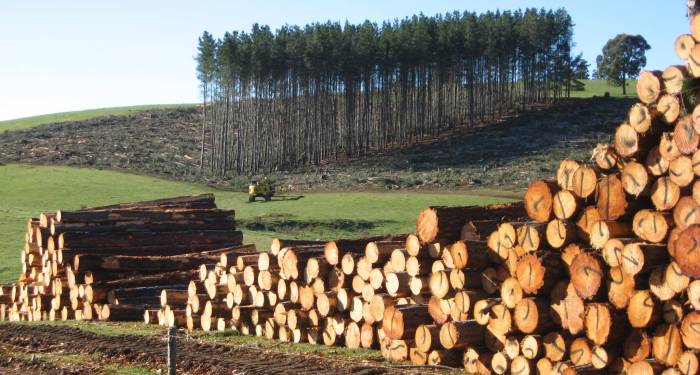Harvesting and selling wood
A growing industry with opportunities for Tasmanian farmers
Harvesting and selling wood supports Australia's timber supply. Demand for wood is growing, driven by the home building and renewables markets.

Create new income streams for your farm with commercial wood production. Harvesting and selling trees can be complex, and there are some added challenges for small-scale forestry operations. But with proper planning, commercial trees can be an attractive option.
Harvest and sell wood to diversify your farm's revenue and support future profitability.
Did you know?
Around half a million hectares of softwood trees need to be planted in Australia by 2050 for the domestic market.
Harvesting trees
Harvesting trees involves a lot of planning across multiple stages. This includes harvest inspections, legal approvals, clean-up and reforestation. There are three main methods for harvesting trees:

Clearfelling
All, or nearly all, trees are removed from an area during harvesting.

Selective harvesting
Trees are chosen for harvest based on their size and quality. The remaining trees are left standing. This results in multi-aged forests and periodic returns.

Commercial thinning
Trees thinned during tree management are sold for mid-rotation income. Several thinnings can happen over a plantation's lifecycle.

Forest Certification
A process that ensures forests (both native and plantation), and the wood products derived from them are managed sustainably providing assurance to consumers and stakeholders.
Learn moreTechnologies for harvesting at smaller scales (such as farm forestry) are making their way to Tasmania, but are not yet widely available.
Most farmers get support to manage their harvests. Start by discussing your options with a consulting forester. They can manage each stage of the harvest process and help get the best returns from your trees.
Learn more about small-scale harvesting, including how a forester can help:
Appropriate technologies for small-scale forest harvesting Why do I need a consulting Forester and how do I choose? Contractors and contracts: A guide for foresters, landowners and plannersHarvesting native regrowth forests
Tasmania's private native regrowth forests have a long history of active management for timber production.
For forest health and survival, operations must be carefully designed to suit specific conditions and outcomes.
Selling wood
When marketing and selling wood, you can either connect with buyers directly or go through a broker. There are four main types of buyer in Tasmania:
- Industrial forestry companies
- Independent management or broker companies
- Sawmillers
- Harvesting contractors.
Selling timber involves multiple stages. This is likely to include:

Negotiations
Negotiations with potential buyers to agree on grades, quantities, prices and timing

Planning
Conduct forest inspections, estimate volume and potential returns, consider infrastructure and potential issues

Purchase agreements
Agree on the terms of sale and finalise contracts

Forest Practices Plan
Prepare and complete a Forest Practices Plan with the help of Forest Practices Officer

Contractors
Plan for and arrange harvest contractors, and agree on rates for the work

Harvesting and haulage
Conduct the harvest and supply the products in line with the sales contract terms

Post-harvest care
Plan and complete reforestation activities at the harvest site, including monitoring forest health
Find guides about selling wood, including how to find potential buyers:
How to sell wood from your private forests Marketing and harvesting – Small Volumes of Minor Species and High Value Timbers from Private Forests Download fact sheet: Harvesting and sellingMarkets and end uses
Before finding a buyer, take time to research your available markets.
Maximise your income from trees by understanding your product and the available markets in Tasmania.
Economic benefits and markets
